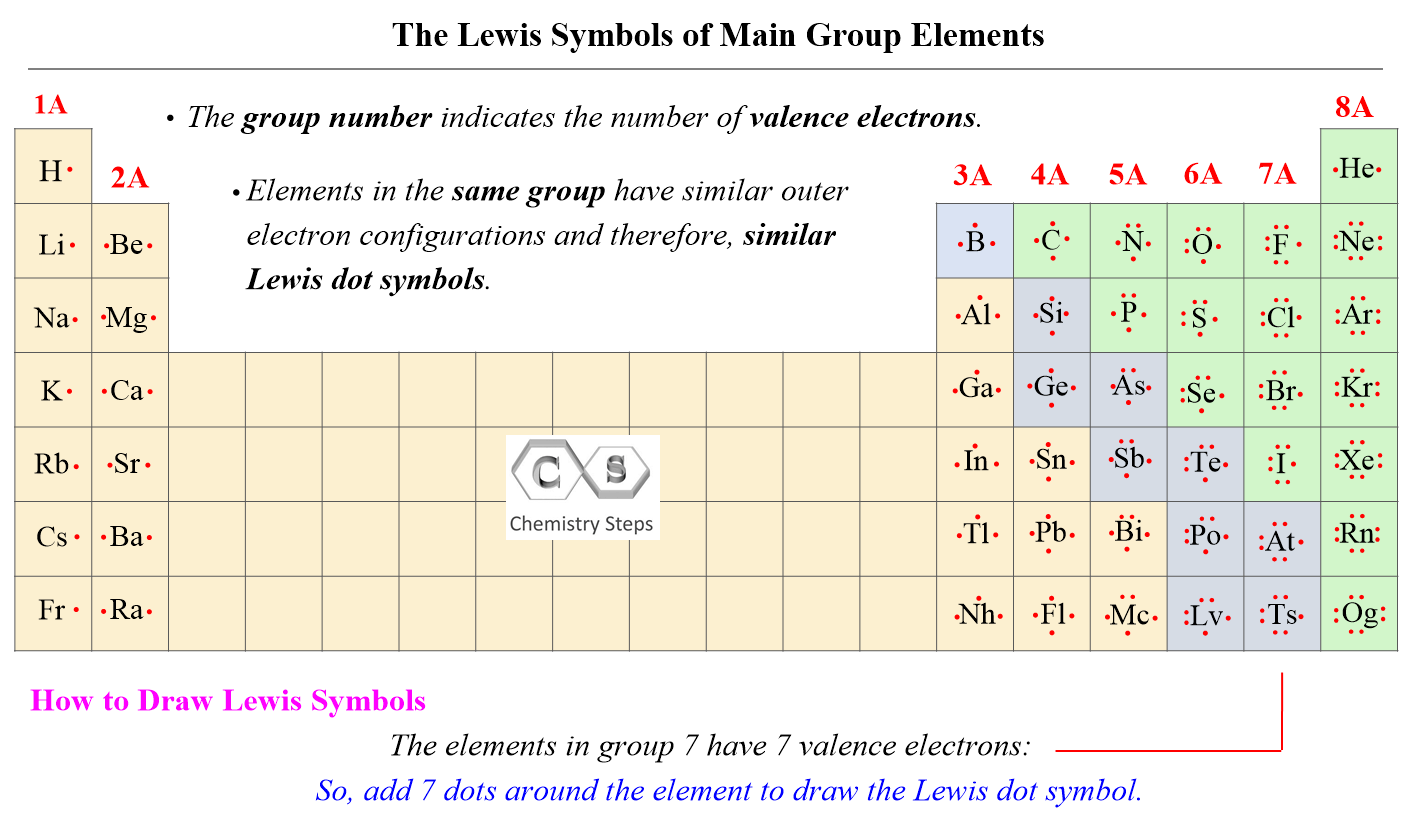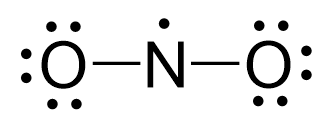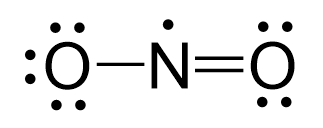In this post, we will be drawing the Lewis structure of nitrogen dioxide, NO2.
The first thing we need to do when drawing a Lewis structure is determine the total number of valence electrons in the molecule. Remember, valence electrons are those in the outermost principal energy level. For example: Na – 1s22s22p63s1, Cl – 1s22s22p63s23p5
The number of valence electrons, for main group elements, corresponds to their group number in the periodic table:

For d block elements, the outermost d electrons are also counted as valence electrons (ns + (n-1)d). For example, iron has eight valence electrons: Fe – 1s22s22p63s23p64s23d6.
So, oxygen is in group 6A, and therefore, it has 6 valence electrons, thus O3 has 3 x 6 = 18 valence electrons.
Next, we need to connect the atoms in the correct order and add the electrons as bonds and lone pairs.
In short, these are the steps you need to follow for drawing a Lewis structure:
1. Write the correct skeletal structure for the molecule.
* Hydrogen atoms are always terminal (only one bond)
* Put more electronegative elements in terminal positions
2. Sum the valence electrons from all the atoms.
3. Use a pair of electrons to form a bond between each pair of bound atoms.
4. Add the remaining electrons to satisfy the octet for a more electronegative atom first.
5. If any atoms lack an octet, make a double or triple bond to give them an octet.
Nitrogen is the central atom, so we can draw the skeletal structure:

There are 2×6 + 5 = 17 electrons, and 4 of them are used to make 2 bonds. The two oxygens take 6 lone pairs, and the remaining one electron goes to the nitrogen:

As it is drawn, the problems with this structure are that the nitrogen lacks an octet and the oxygens have only one bond and three lone pairs. Remember, the normal valency of oxygens is having two bonds and two lone pairs otherwise a formal charge needs to be assigned.
Therefore, one lone pair from each oxygen is used to make an additional bond with the nitrogen:

Notice that the left oxygen has three lone pairs and one single bond which means there is a negative formal charge on it.
FC= V – (N + B)
Where:
V – number of valence electrons
N – number of nonbonding electrons
B – number of bonds
So, the formal charge of the oxygen will be
FC (O) = 6 – (6 + 1) = -1
For the nitrogen, the formal charge is
FC (N) = 5 – (1 + 3) = +1
So, overall, the molecule is neutral, however, two atoms have formal charges that balance each other.
For geometry, we need to consider the repulsive effect of the electron on the nitrogen. Like a lone pair, it pushes the oxygens down thus making the electron geometry trigonal planar while the molecular geometry is bent.

Check this 99-question multiple-choice quiz on Geometry and Hybridization:
Check Also

